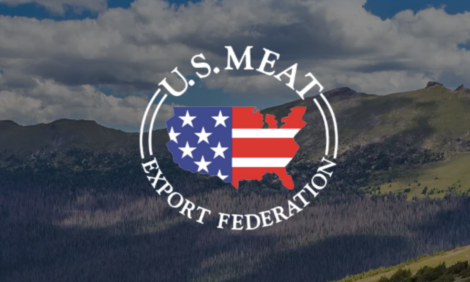



Scientists Gain Understanding of Salmonella
UK - Research has shown how Salmonella bacteria attach themselves to food, offering potential for better future control of foodborne disease.Salmonella is a particularly nasty type of bacteria and is most frequently the primary suspect in incidences of food poisoning. Any attempt to tackle this bacterium must be built on an understanding of salmonella. This is why European scientists have had salmonella under the microscope for so long, and as a result, they have discovered how the bacterium manages to attach itself to food, especially vegetables and plant leaves, in the first place.
A new study headed by Professor Gadi Frankel from Imperial College London in the UK has revealed how the salmonella bacteria use their stringy appendages to attach themselves to salad leaves and other vegetables. The results were presented at the 21st International ICFMH Symposium 'Food Micro 2008' conference held in Aberdeen from 1- 4 September.
* "Cases of salmonella and E. coli poisoning caused by salads are likely to rise in the future. This is why it's important to get a head start with understanding how contamination occurs now." |
|
Professor Gadi Frankel
Imperial College London |
Last October, a salmonella outbreak affected 144 people across Ireland and the UK. This outbreak, according to the European Centre for Disease Control and Prevention, was linked to a similar outbreak in France, Finland and Sweden. Food poisoning as a result of salmonella is usually associated with contaminated meat products, primarily from cattle and chicken. The pathogens live in the guts of cows and the guts and egg-ducts of chickens and contamination of meat is most likely to occur during the slaughtering process.
What may be shocking to some is the fact that salmonella can also occur from eating salads. According to UK statistics, between 1996 and 2000, 23 per cent of the UK's infectious intestinal disease outbreaks like salmonella and E. coli were caused by contaminated food, and of these, 4 per cent were linked to prepared salad. With so much attention being focused on meats, salmonella contamination of salads is often overlooked.
This research is more important now than ever before as people are increasingly choosing to eat healthier. "In their efforts to eat healthily, people are eating more salad products, choosing to buy organic brands, and preferring the ease of pre-washed bagged salads from supermarkets, than ever before," explained Professor Gadi Frankel.
"All of these factors, together with the globalisation of the food market, mean that cases of salmonella and E. coli poisoning caused by salads are likely to rise in the future. This is why it's important to get a head start with understanding how contamination occurs now.'
What the study was able to discover was precisely how the salmonella bacterium attack and attach themselves to vegetables; it found that this was done through the use of their stringy appendages, or flagella as they are known. This ability to attach itself to vegetables is used by one particular strain of salmonella called Salmonella enterica serovar Senftenberg. Increased understanding of the mechanism that pathogens such as salmonella use to bind themselves to vegetables is important if scientists are to develop new methods of preventing this kind of contamination and the sickness it causes.
The flagella are primarily used by the bacterium to move around. They flatten themselves out beneath the bacteria and then attach themselves onto vegetables, giving themselves the appearance of long thin fingers holding onto the vegetable. Further proof was needed to confirm that salmonella did indeed require these appendages to attach themselves to vegetables. The scientists then genetically engineered salmonella without flagella in the lab and found that they could not attach themselves to the leaves, and the salad remained uncontaminated.
According to Professor Frankel, "Discovering that the flagella play a key role in Salmonella's ability to contaminate salad leaves gives us a better understanding then ever before of how this contamination process occurs. Once we understand it, we can begin to work on ways of fighting it."
The team will continue their research and will now look at which salad leaves are more susceptible to salmonella. "If we can find out what factors affect susceptibility, we may be able to develop new technologies to harness the 'immunity' found in some salad leaves to protect others from contamination," commented Professor Frankel.
There are some handy tips that consumers can follow to help protect themselves from salmonella. High on this list is cleanliness:
- People should wash their hands with warm soapy water before and after handling food, using the bathroom or touching pets.
- Cleaning the surface of raw fruits and vegetables can also go some way to protect against contamination.
- Raw meat, poultry and seafood should be stored separately and ideally separate chopping boards used for each produce.
- All types of meat should be cooked to appropriate temperatures, such as 78.3°C for poultry or bringing sauces to a boil when reheating.
- Do not over-pack the refrigerator as cool air must circulate to keep food safe.
TheCattleSite News Desk


